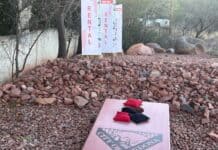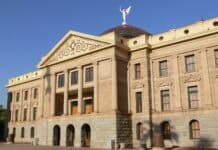A school district can no longer satisfy the state?s gifted and talented requirements simply by offering advanced placement and honors classes, as has been the norm.
Larson Newspapers
________________
A school district can no longer satisfy the state?s gifted and talented requirements simply by offering advanced placement and honors classes, as has been the norm.
Although local educators agree that the new legislation for governing gifted and talented education is good and long overdue, the funding is still lagging at about $75 per identified student, which takes it from $1,500 to $4,500 for the entire Sedona-Oak Creek District.
?We could do more for gifted and talented,? admitted Russ Snider, principal of Sedona Red Rock High School, but this level of funding makes it ?not significant? in serving the gifted and talented.
Snider gave a report to the high school Site Council on the direction the state is going to meet the needs gifted and talented students.
He said that instruction for the gifted and talented had to be ?different and accelerated? to begin to meet the requirement.
He recently attended a conference where many of the presenters were students who were identified as gifted in high school and were now college students. These presenters
discussed what they received, and what they did not receive, during their kindergarten to 12th-grade education.
Snider said it was an effective method of informing school officials of the issues these students face.
Deb Saunders, coordinator of the program at West Sedona School, said the new legislation recognizes gifted students? ?need to be with others like them. It is trying to get schools to address the social and emotional needs? of gifted and talented students by designing ?activities and strategies that are more individual? rather than the mixed-group setting that AP and honors classes offer.
AP and honors classes are open to all students who have the drive and the perseverance to want to try them.
Gifted and talented programs and funds are aimed at the top 3 percent of a school?s student body and students must be tested to qualify. These students are identified with a test, series of tests and possibly a specially designed rating scale.
The scale attempts to identify gifted students who are not English proficient.
Saunders said the district has 10 to 12 percent identified as gifted. ?That is a pretty high number when you consider we only identify the top 3 percent.?
Saunders noted that the students need to be assessed in three modalities: verbal, numerical and visual-spatial.
Arizona Department of Education Associate Superintendent John Stollar praised the efforts of activist parents, especially Shelly Ackerman Hirsch, in getting the legislation passed.
?They got [Ariz. Rep.] Mark Anderson [R-District 29] on their side? and he helped get the legislation through.
While admitting the program is ?woefully underfunded? and little more than ?token funding,? Stollar noted that was the
?single biggest increase in the history of the state.?
Big Park Community School also participates in the district effort for gifted and talented students with its Advanced Learner Program. ALP is headed by Michelle Johnson, who identifies the students through testing, performs in-class assistance with students kindergarten through second grade and has a pull-out, project-oriented program for students in third through eighth grade. Like the other district school, the projects and activities tend toward ?content in context? and seek to be individualized.


















